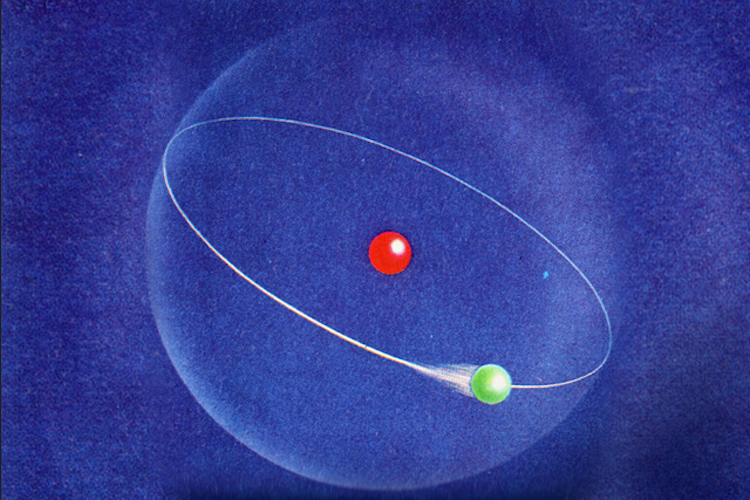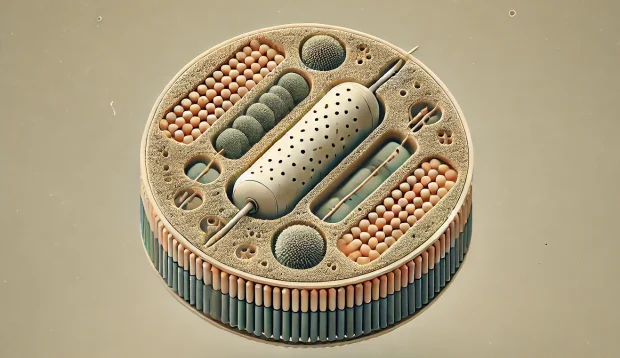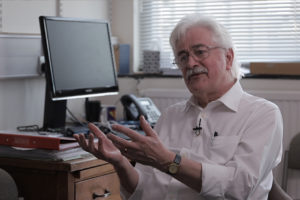Lunar Rover Wheel
Cloud Technology Researcher José Luis Vázquez-Poletti on designing technology to explore the Moon

Fuel cells represent a way of electrochemically converting hydrogen fuel into energy, producing only water as a by-product. The hydrogen fuel used in the fuel cell today is typically produced from steam methane reforming, although solar-powered water electrolysis will offer a green energy route. The base components of a fuel cell include:
Fuel cells have a rich history dating back to the 1830s when the first hydrogen fuel cell was synthesized by William R. Grove utilizing a sulfuric acid electrolyte. The discovery was made due to Grove attempting to precipitate copper from an aqueous copper sulfate solution onto an iron surface. He noticed that water decomposed to form hydrogen and oxygen under an applied potential. Following this discovery, Grove, as well as Christian F.

Schönbein, a chemist at the University of Basel in Switzerland, simultaneously demonstrated in 1839 the production of power from a hydrogen/oxygen fuel cell operating in an acidic electrolyte. These initial efforts, though primitive in nature, caught the attention of various contemporaries, including Michael Faraday. The state of fuel cell research was further advanced when the incorporation of an ion-exchange membrane to facilitate the transport of hydroxide ions was first accomplished in the 1930s by F.T. Bacon for alkaline fuel cells. Alkaline fuel cells have been used most famously by NASA as a primary power source during their Apollo space missions due to their lifetime and sustainability, as well as hydroxide exchange membranes (HEMs) previously outperforming their proton-conduction counterparts. Over the course of nearly two centuries since the first fuel cell prototype was introduced, significant advances have been made in improving their performance. In general, the final power which is obtained from the fuel cell is a function of the kinetics of the redox reaction, the internal resistance of the cell, and the mass transport of reactant gases and ionic species to the catalytically active sites. Examples of how the fuel cell has been made more feasible due to careful engineering design include:
Hydroxide exchange membrane fuel cells (HEMFCs) is one more direction of research in which, in particular, the University of Delaware is interested. HEMFCs offer an advantage over proton exchange membrane fuel cells (PEMFCs) since the stability of catalysts in acidic media is a major challenge, and many more non-noble metal catalysts are stable in alkaline solutions. The increased stability of catalysts in alkaline solutions is owed to the metal dissolution being, in general, more exothermic at lower pH than at high pH. Much of this work has been on developing new hydrogen oxidation reaction (HOR) and oxygen reduction reaction (ORR) anode and cathode catalysts, which are capable of speeding up the reaction. In addition, novel hydroxide exchange membranes have been developed, as the conductivity and long-term durability of HEMs need to be improved to compete with Nafion membranes in PEMFCs.
Due to the excellent PEMs which have been invented and also due to the relative ease of oxidizing hydrogen in an acidic environment, others have often focused on developing new cathode catalysts for ORR in acid. ORR is the largest source of overpotential losses in the fuel cell. Overpotential means that an additional thermodynamic driving force must be provided in order to achieve a given current density (increasing current density implies that a larger driving force is needed). In the fuel cell, this is equivalent to decreasing the chemical potential of electrons at the anode side and increasing the chemical potential of electrons at the cathode side. As a result, the achievable electromotive force of the fuel cell decreases as the current density increases. The origin of overpotential losses for the ORR has been explained in terms of linear scaling relations (LSRs), which exist among the ORR intermediates. In a traditional four-electron ORR mechanism, O2 is sequentially reduced to form OOH*, O*, and OH* intermediates on the catalyst surface before ultimately evolving H2O from the catalyst surface. Because the adsorption energies of the ORR intermediates on a particular catalyst are highly correlated, a catalyst that is theoretically capable of requiring no additional overpotential has not been demonstrated as of yet. Even though the rate of ORR is low, when switching from the acidic to the basic environment of the HEMFC, the rate of ORR remains relatively unchanged. However, the rate of HOR is decreased by about two orders of magnitude, and thus, motivates a need to understand the origin of this decrease in activity and find better catalysts.
In contrast to fossil fuels, fuel cells are environmentally more or completely benign and do not produce greenhouse gases as a result of their operation. Furthermore, their fuel (hydrogen) is, in principle, renewable, namely through the hydrolysis of water to produce H2 and O2. As a result, the fuel cell offers the promise of being an integral part of a future renewable energy portfolio where solar or wind energy is used to produce the hydrogen fuel source, which is then used in the fuel cell to produce water, thus creating a closed loop with no carbon footprint.

Compared to other competing technologies, such as rechargeable batteries, fuel cells offer the benefit of having immediate energy on demand, whereas batteries must be recharged in order to be re-used. Applied to the consumer transportation economy, this means that fuel cells require almost no change in the experience of the consumer. In addition, other renewable energy sources, such as solar and wind, have the disadvantage of being intermittent. Geothermal energy sources, on the other hand, have the disadvantage of being only feasible for certain geographic locations. Fuel cells are among the most promising alternative energy sources due to their highly portable nature and scalability.
Outside of the issues of designing better catalysts and membranes, other technical challenges for fuel cells include the storage and transportation of the hydrogen source. Hydrogen has a very poor volumetric energy density (the amount of energy contained per unit volume at a given temperature and pressure). It, therefore, must be stored at extreme pressure in order for it to be incorporated into vehicle technologies. Otherwise, the size of the tank needed to store the hydrogen fuel would be prohibitively large for vehicle purposes. Due to this fundamental limitation of hydrogen storage, there has been work done on how to obtain hydrogen from sources other than gaseous H2, such as metal-hydride fuel cells. Nevertheless, current consumer fuel cell technologies, like the Toyota Mirai, have resorted to using supercritical H2(hydrogen which is at a pressure and temperature above its critical point of 13.3 atm and 33K, as this is still the most viable option.
As a result of the current challenges, as well as the unique challenges of solar production of H2 from H2O, future work will likely focus on alternative hydrogen sources that can be used to power a fuel cell. One popular idea we have been studying over the years is to use either ammonia directly in a fuel cell (in place of hydrogen) or to produce H2 from ammonia due to the capability of storing ammonia as a liquid at significantly lower pressures and thus being much more facile to store and transport. In addition, ammonia is particularly attractive as a hydrogen source for fuel cells due to it being free of carbon. As a result, the issue of catalyst poisoning due to trace amounts of CO in the methane-derived H2 can be eliminated. Ammonia oxidation, however, is itself not well-understood and requires large overpotentials to achieve a sufficient current density due to the relative stability of NH3 in comparison to the reaction intermediates of the ammonia oxidation process. Interestingly, the same problem which limits ORR also is a limiting factor for ammonia oxidation: the difficulty of designing the optimal catalyst due to the existence of LSRs. As a result, by achieving a fundamental understanding of under what criteria these LSRs are broken and through the subsequent design of these catalysts in a laboratory, we might, in a relatively short time, solve many of the issues limiting the kinetics of these processes.
In the future, fuel cells may find an increased presence in-vehicle applications and distributed power generation, e.g., in residential neighborhoods. While the use of fuel cells as a primary source of energy is currently cost-prohibitive, future advancements in the discovery of cheaper and more efficient catalysts, highly conductive and stable membranes, and alternative hydrogen sources offer the opportunity to make fuel cells significantly more attractive economically.

Cloud Technology Researcher José Luis Vázquez-Poletti on designing technology to explore the Moon

Physicist David Southwood on how the magnetic field of Earth causes natural losses of spacecraft, the aurorae ...

How much do wind and solar energy cost, and why haven't we fully transitioned to RES yet?